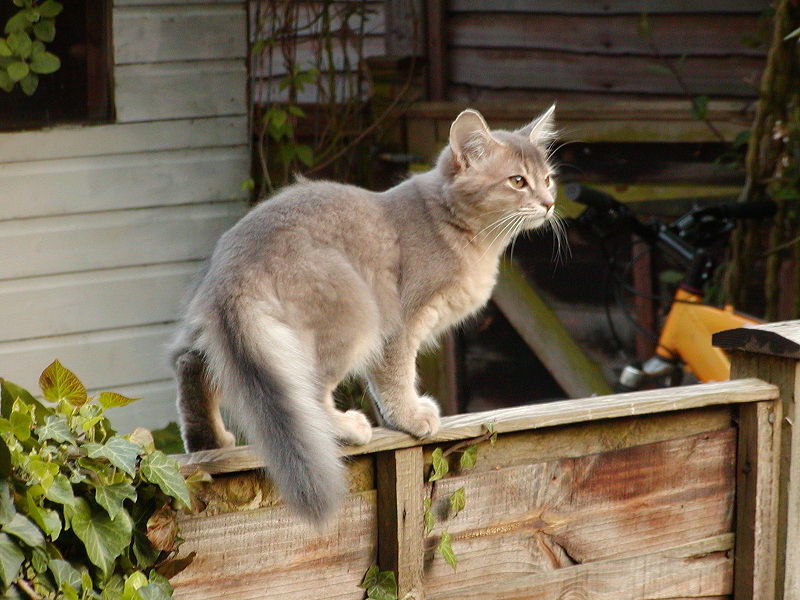John K Rosembert
 The Somali cat is often described as a long-haired African cat; a product of a recessive gene in Abyssinian cats, though how the gene was introduced into the Abyssinian gene pool is unknown. It is believed that they originated from Somalia, long lost cousin of the Abyssinian cat; which has origins in Ethiopia.
The Somali cat is often described as a long-haired African cat; a product of a recessive gene in Abyssinian cats, though how the gene was introduced into the Abyssinian gene pool is unknown. It is believed that they originated from Somalia, long lost cousin of the Abyssinian cat; which has origins in Ethiopia.
If one judged by appearance, the Somali appears feral, but one look into its eyes and it is clear that this cat has a lot more going on in its head than the average cat. The Somali is so well known for its alertness that the standards for the breed include “alert” in the physical description. The eyes are almond-shaped, and may be green or copper-gold.
In size, the Somali is medium to large, muscular and well proportioned, and like its forbearer the Abyssinian, the Somali is elegant yet solidly built. It is a slow developing breed, reaching its full size, maturity, and potential around 18 months.
The hair is agouti, or ticked, with anywhere from 4-20 bands of color on each strand. The standard colors for the Somali are red, blue, ruddy, or fawn, but this breed is born in a lot of other colors as well. Silver is one of the colors gaining popularity, for example.
The Somali is an active cat who loves to jump and play. In spite of that, she is an easy cat to have in your home. Somalis love people and other animals. Somalis are social cats and like to have some company. This company can be provided by another cat or when people are not at home. The Somali is loving and affectionate and loves to spend time with her parent. While the Somali is a long haired cat, the coat is easy to care for since it is not woolly. A daily brushing as part of play time will keep the Somali’s coat soft and silky. She will reward her groomer with a loving purr.
Somalis are active cats and generally will keep their weight under control with compensating exercise. They should have some high perches and cat trees available so they can jump and climb.
Some Somalis, like some Abyssinians, can develop a hereditary health issue called pyruvate kinase deficiency that can be a concern, especially if you aren’t cautious about who you buy from. Pyruvate kinase is a key regulatory enzyme in the metabolism of sugar. Cats deficient in PK typically have intermittent anemia. The deficiency can appear in Somalis as young as 6 months and as old as 12 years. The hereditary condition is caused by a recessive gene. A DNA test is available to determine whether a cat is normal, a carrier or affected by PK deficiency. Testing for PK deficiency and breeding away from it will eventually help to eliminate the disease from the breed.
Not every PK-deficient cat develops clinical signs, which vary but include lethargy, depression, lack of appetite, and pale gums. The best treatment for PK deficiency is unknown, but it’s still a good idea to have a Somali tested for it. Other problems that may be seen in the breed include a disorder called renal amyloidosis, a neuromuscular condition called myasthenia gravis, and an eye disease called progressive retinal atrophy, which eventually leads to blindness.
Source: https://www.hillspet.com/cat-care/cat-breeds/somali
http://www.vetstreet.com/cats/somali#health
Photo credit: https://en.wikipedia.org/wiki/Somali_cat#/media/File:Blue_Somali_kitten_age_3_months.jpg

